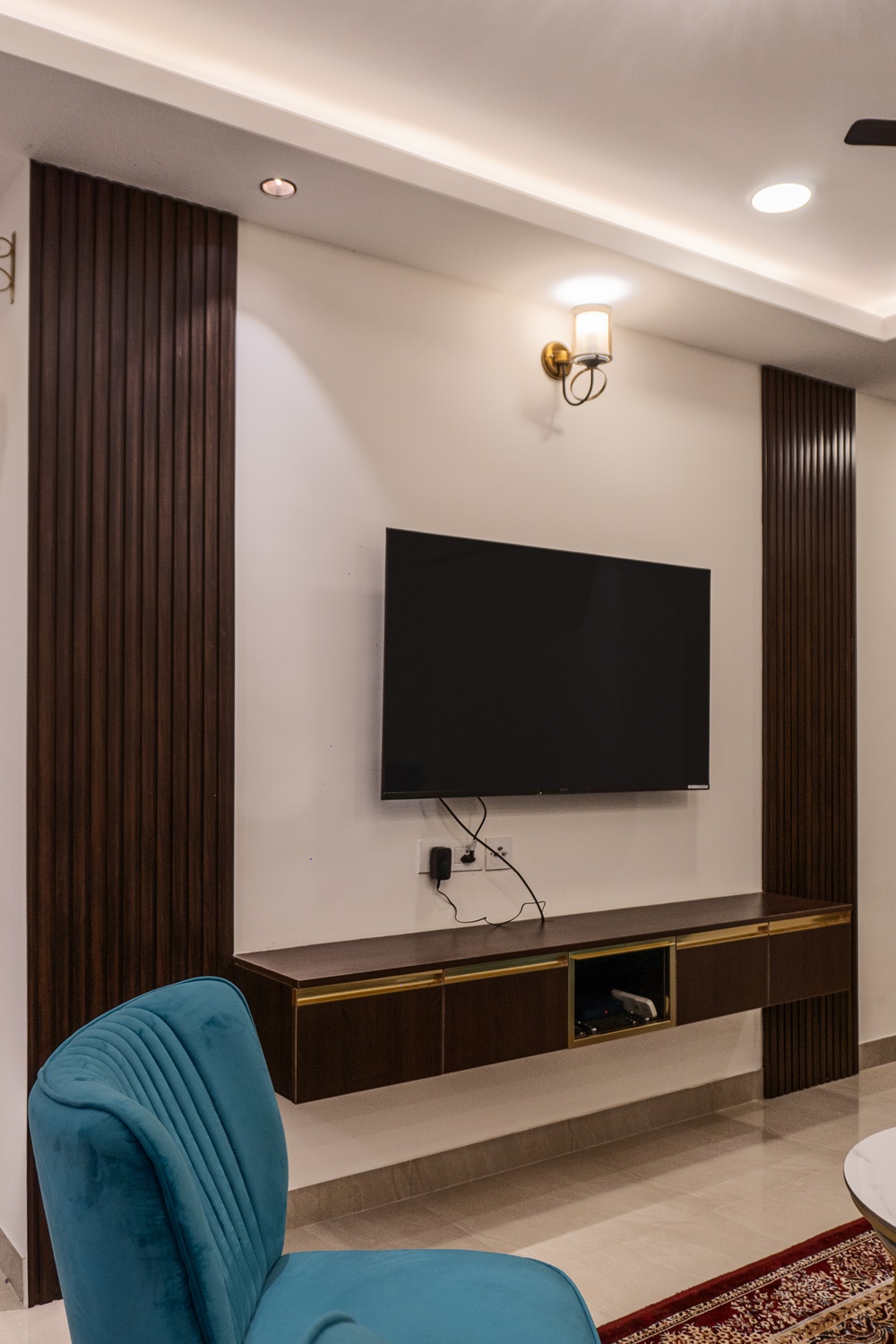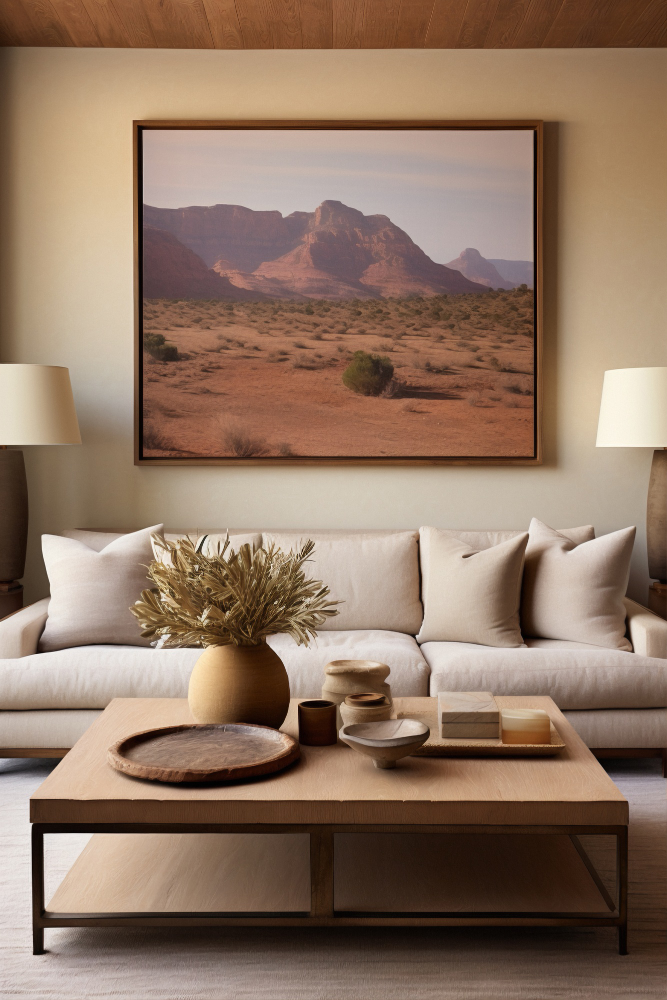
TV unit.
A TV unit in the living room serves as both a functional and decorative element, offering a designated space for entertainment equipment while enhancing the room’s overall aesthetic. It is designed to accommodate a television, media devices, and often incorporates storage for related items such as remotes, gaming consoles, and decor.
Key Elements of a TV Unit:
1. Design Styles:
- Modern/Contemporary: Sleek lines, minimalistic designs, and materials like glass, metal, or high-gloss finishes define modern TV units. They emphasize simplicity and functionality.
- Traditional: Typically crafted from wood, traditional TV units feature decorative moldings, detailed carvings, and rich wood tones like mahogany, walnut, or oak.
- Industrial: Combining wood and metal elements, industrial-style TV units often feature exposed metal frames, darker wood finishes, and a more rugged, utilitarian design.
- Scandinavian: Clean lines, light wood tones, and a focus on minimalism define this style, often incorporating neutral color palettes and simple, functional designs.
2. Materials:
- Wood: Wood is one of the most popular materials for TV units. Solid wood like teak, oak, or engineered wood (MDF or plywood) provides durability and adds warmth to the living room.
- Metal: Metal frames or accents, like legs and handles, give a modern or industrial edge to the unit. It's often combined with wood or glass for a contemporary look.
- Glass: Tempered glass shelves or surfaces can create an airy, open look and add sophistication to modern or minimalist spaces.
- Laminate/High Gloss Finish: These materials are durable and easy to clean, offering a variety of colors and finishes, from matte to glossy.
3. Types of TV Units:
- Wall-Mounted TV Unit: A sleek, space-saving solution where the TV is mounted directly on the wall, and the unit consists of floating shelves or cabinets beneath or around the TV for media storage. It creates a modern, streamlined look and leaves more floor space.
- Freestanding TV Unit: A traditional style where the TV sits on top of a cabinet or console. These units typically have multiple storage options like cabinets, drawers, or open shelving.
- Entertainment Center: A larger, more elaborate unit that surrounds the TV with a combination of shelves, cabinets, and display spaces. It often occupies an entire wall and is ideal for larger living rooms or media rooms.
- Corner TV Unit: Designed to fit into a corner, this type of unit maximizes space in smaller living rooms. It typically has a triangular or rounded shape to fit neatly into the corner without taking up too much floor space.
4. Storage Solutions:
- Cabinets and Drawers: Closed cabinets and drawers offer hidden storage for DVDs, remotes, gaming consoles, or other electronic devices, keeping the space organized and clutter-free.
- Open Shelves: Open shelving provides space to display decorative items like vases, books, or framed photos, while also allowing for easy access to media players, speakers, or sound systems.
- Floating Shelves: Often part of wall-mounted units, floating shelves offer an elegant, space-efficient solution for storing or displaying items without adding bulk to the room.
- Cable Management: Many TV units come with built-in cable management systems, featuring holes or channels to hide unsightly wires and keep the area around the unit neat.
5. TV Unit Features:
- Adjustable Shelving: Some units come with adjustable shelves, allowing flexibility to accommodate different-sized devices or rearrange the layout for aesthetic or functional purposes.
- Integrated Lighting: LED lights or spotlights can be incorporated into the design, highlighting decorative items on shelves and creating a warm, inviting ambiance.
- Glass Doors: Glass-fronted cabinets are a popular feature, allowing for the display of media equipment while keeping dust away. Frosted or tinted glass can add a modern touch.
- Media Storage: Specialized compartments or slots for CDs, DVDs, or vinyl records can be integrated into the unit for easy organization and access.
6. Size and Proportion:
- Proportional Design: The size of the TV unit should be proportional to both the TV and the size of the living room. A large entertainment center might overwhelm a small room, while a small, minimalist unit may look out of place in a large, spacious living room.
- Width: Ideally, the unit should be wider than the TV to create a balanced visual appearance.
- Height: The TV should be at eye level when seated for optimal viewing comfort. Many units are designed to ensure that the TV sits at the correct height or can be adjusted accordingly.
7. Decorative Enhancements:
- Decorative Accents: TV units can be enhanced with decorative accents such as vases, photo frames, sculptures, or potted plants placed on open shelves or around the TV.
- Mirrors or Artwork: If the TV unit is large, mirrors or artwork placed on either side can help balance the visual weight and add a decorative element to the space.
- Color Palette: The color and finish of the TV unit should harmonize with the living room's color scheme. Neutral tones like white, beige, or gray blend well with most interiors, while bold colors like black, navy, or dark wood add a more dramatic touch.


